Characters
Alexander de Milja is a young army officer. His family belongs to the Polish aristocracy, and he is a graduate of the elite French military school Saint-Cyr. Working as a cartographer in the Polish military before the fall of Poland, De Milja is then recruited to the underground, where his exploits see him assume various aliases; he passes at any one time as a Russian writer, a Slovak coal merchant, or a Polish horse breeder.
Anton Vyborg is De Milja's superior in the armed forces and a key source of help. He also appears in The Spies of Warsaw and Dark Star.
Genya Beilis is De Milja's main love interest in the novel.
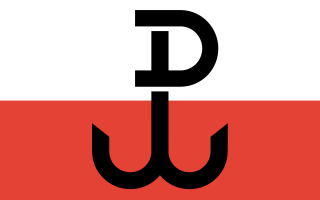
The Home Army was the dominant resistance movement in German-occupied Poland during World War II. The Home Army was formed in February 1942 from the earlier Związek Walki Zbrojnej established in the aftermath of the German and Soviet invasions in September 1939. Over the next two years, the Home Army absorbed most of the other Polish partisans and underground forces. Its allegiance was to the Polish government-in-exile in London, and it constituted the armed wing of what came to be known as the Polish Underground State. Estimates of the Home Army's 1944 strength range between 200,000 and 600,000. The latter number made the Home Army not only Poland's largest underground resistance movement but, along with Soviet and Yugoslav partisans, one of Europe's largest World War II underground movements.

The history of Poland from 1939 to 1945 encompasses primarily the period from the invasion of Poland by Nazi Germany and the Soviet Union to the end of World War II. Following the German–Soviet non-aggression pact, Poland was invaded by Nazi Germany on 1 September 1939 and by the Soviet Union on 17 September. The campaigns ended in early October with Germany and the Soviet Union dividing and annexing the whole of Poland. After the Axis attack on the Soviet Union in the summer of 1941, the entirety of Poland was occupied by Germany, which proceeded to advance its racial and genocidal policies across Poland.
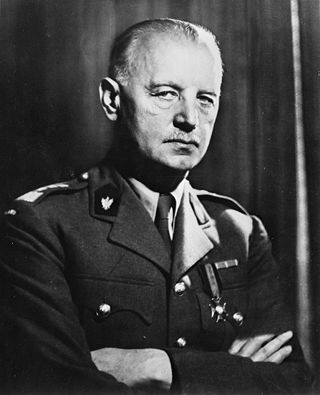
Władysław Eugeniusz Sikorski was a Polish military and political leader.

The Warsaw Uprising, shortly after the war also known as the August Uprising, was a major World War II operation by the Polish underground resistance to liberate Warsaw from German occupation. It occurred in the summer of 1944, and it was led by the Polish resistance Home Army. The uprising was timed to coincide with the retreat of the German forces from Poland ahead of the Soviet advance. While approaching the eastern suburbs of the city, the Red Army halted combat operations, enabling the Germans to regroup and defeat the Polish resistance and to destroy the city in retaliation. The Uprising was fought for 63 days with little outside support. It was the single largest military effort taken by any European resistance movement during World War II.

The January Uprising was an insurrection principally in Russia's Kingdom of Poland that was aimed at putting an end to Russian occupation of part of Poland and regaining independence. It began on 22 January 1863 and continued until the last insurgents were captured by the Russian forces in 1864.

Stefan Paweł Rowecki was a Polish general, journalist and the leader of the Armia Krajowa. He was murdered by the Gestapo in prison on the personal order of Heinrich Himmler.
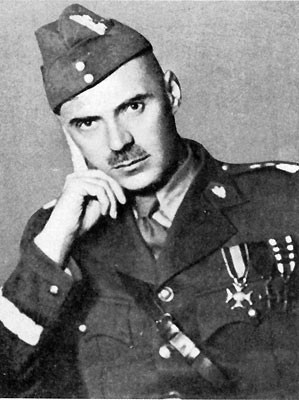
Władysław Albert Anders was a general in the Polish Army and later in life a politician and prominent member of the Polish government-in-exile in London.
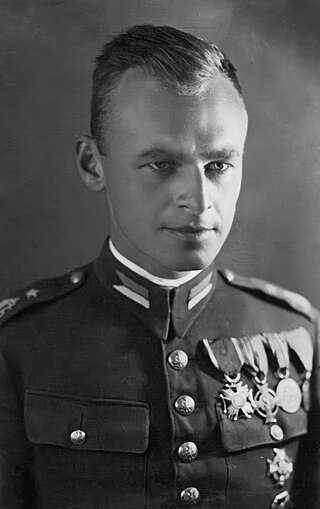
Witold Pilecki was a Polish World War II cavalry officer, intelligence agent, and resistance leader.

Marshal Edward Rydz-Śmigły also called Edward Śmigły-Rydz, was a Polish politician, statesman, Marshal of Poland and Commander-in-Chief of Poland's armed forces, as well as a painter and poet.

The Union of Armed Struggle, also translated as the Union for Armed Struggle, Association of Armed Struggle, and Association for Armed Struggle, was an underground army formed in Poland following its invasion in September 1939 by Germany and the Soviet Union that opened World War II. It existed from 13 November 1939 until 14 February 1942, when it was renamed into Home Army.
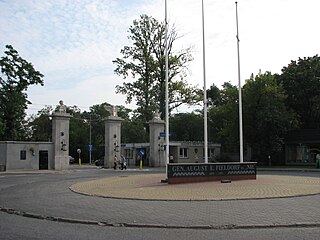
The National Defence University of Warsaw was the civil-military highest defence academic institution in Poland, located in Warszawa–Rembertów. In 2016 it was succeeded by the War Studies University.
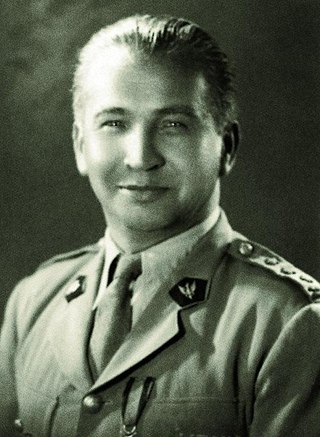
General Leopold Okulicki was a Polish Army general and the last commander of the anti-Nazi underground Home Army during World War II and the German occupation of Poland (1939–1945).

Wacław Teofil Stachiewicz was a Polish writer, geologist, military commander and general of the Polish Army. A brother to General Julian Stachiewicz and the husband to General Roman Abraham's sister, Stachiewicz was the Chief of General Staff of the Polish Army during the Polish Defensive War of 1939.
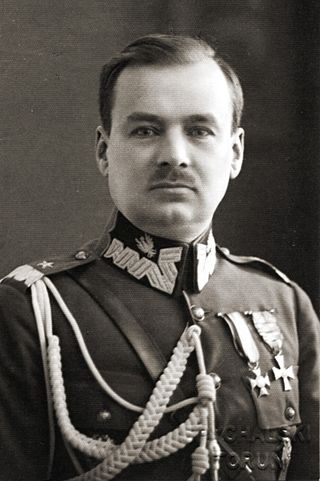
Wiktor Thommée (1881–1962) was a Polish military commander and a brigadier general of the Polish Army. A veteran of the Great War and the Russian Civil War, he is best known for his command over Piotrków Operational Group and the battle of the Bzura during the Invasion of Poland of 1939.

Jewish resistance under Nazi rule took various forms of organized underground activities conducted against German occupation regimes in Europe by Jews during World War II. According to historian Yehuda Bauer, Jewish resistance was defined as actions that were taken against all laws and actions acted by Germans. The term is particularly connected with the Holocaust and includes a multitude of different social responses by those oppressed, as well as both passive and armed resistance conducted by Jews themselves.

In Poland, the resistance movement during World War II was led by the Home Army. The Polish resistance is notable among others for disrupting German supply lines to the Eastern Front, and providing intelligence reports to the British intelligence agencies. It was a part of the Polish Underground State.

Kazimierz Leski, nom de guerreBradl, was a Polish engineer, co-designer of the Polish submarines ORP Sęp (1938) and ORP Orzeł, a fighter pilot, and an officer in World War II Home Army's intelligence and counter-intelligence.
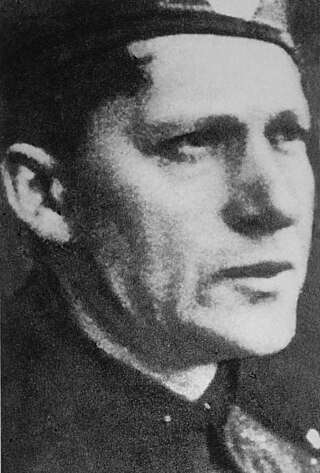
Jan Mazurkiewicz, pseudonym: "Zagłoba", "Socha", "Sęp", "Radosław" was a Polish military leader and politician, colonel of Home Army and brigadier general of the Polish People's Army. Founder of the Secret Military Organization, commander of Kedyw and the Radosław Group during Warsaw Uprising. After the war, he was a political prisoner of the Stalinist period. From 1964 he was vice-president of Society of Fighters for Freedom and Democracy.

Adam Remigiusz Grocholski war names "Brochwicz", "Doktor", "Inżynier", "Miś", "Waligóra", and pseudonym Żukowski was a Lieutenant Colonel (Podpułkownik) of the Polish Army. He retired from active service in 1934.

The Spies of Warsaw is a 2008 novel by Alan Furst set in the years shortly before World War 2 and deals with espionage in Poland as various nations compete for influence and control over the nation's future. The story starts in October 1937 and ends in May 1938, with a one paragraph description outlining the future of two lead characters.




















